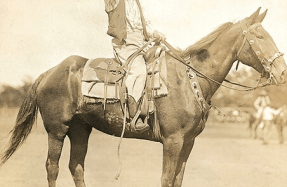REVISITING THE SANTA FE TRAIL



In the 1821–80 heyday of the Santa Fe Trail traders, teamsters, settlers, the military and assorted others plied the route. Early travelers faced daunting obstacles, including mountainous terrain, biting cold, blazing heat, torrential rains, blood-sucking mosquitoes, biting flies, snakes, runaway mules and horses, Indian ambushes, starvation and often no water to drink or wood with which to build a fire. Regardless, many made repeated trips along the 900-mile route from Missouri to Santa Fe, some even recalling it fondly. This year states and local communities along the Santa Fe Trail are marking the 200th anniversary of a route that played a crucial role as the westering nation’s first commercial highway.
In 1821 William Becknell of Franklin, Mo., was drowning in debt. To remedy his financial woes, the desperate U.S. Army veteran turned serial entrepreneur proposed a trading expedition. On June 25 he posted a notice in the local Missouri Intelligencer seeking able-bodied men willing to join his venture. It read in part:
Every man will fit himself for the trip with a horse, a good rifle and as much ammunition as the company may think necessary for a tour or three months trip and sufficient cloathing [sic] to keep him warm and comfortable.… It is requisite that every eight men shall have a packhorse, an ax and a tent to secure them from the inclemency of bad weather.
On August 10 Missouri was admitted to the Union as the 24th state. Less than a month later, on September 1, Becknell and five other men set out with packhorses carrying $300 in merchandise. Their destination: the province of Santa Fe de Nuevo México. In the past American traders rash
You’re reading a preview, subscribe to read more.
Start your free 30 days



